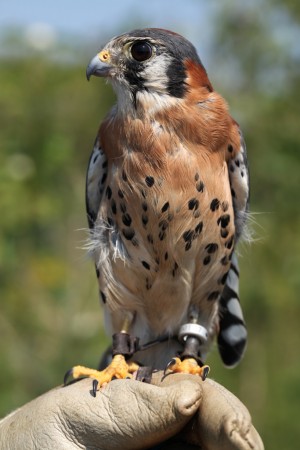Category: Photography
Equipment, examples, history – all matters photographic
Macro and drama
New photos:
- Macro photos of flowers, frogs, and insects
- Photos from the Clay and Paper Theatre Company’s “A History of Forgetting”
My friend Janel provided valuable assistance in frog-spotting and reflector-holding, for the creation of the first set.
Commercial portrait tips
Some interesting advice on photographing people from Sara Lando, directed at serious photographers. Much of it is about handling photographic subjects.
Three days in Montreal
My father and I will be in Montreal until Saturday, visiting my brother Sasha.
On the way up from Toronto, we stopped at the Darlington Nuclear Generating Station. Unfortunately, there are no tours of the main complex. We were able to wander around the general area, as well as visit an information centre.
I put some photos on Flickr. Later, I got some of a ‘casserole’ protest in Montreal, near Rue St. Denis.
Portlands Energy Centre
As part of Doors Open Toronto 2012, my friend Mike and I took a tour of the Portlands Energy Centre: a natural-gas-fired peaker power plant located slightly south and east of downtown Toronto.
This is a combined cycle plant with two gas turbines and a steam turbine. Together, they are about 60% efficient at turning the chemical energy in natural gas into electricity. The plant is a peaker, which means it can be started at reasonably short notice to add power to the grid when demand exceeds supply (summer air conditioning creates Toronto’s highest demand peaks).
The plant puts out 550 megawatts of electricity. The peak temperature inside the gas turbines is about 600˚C, and the output from the steam turbine is at about 80˚C (for all those Carnot efficiency fans out there). Neat fact: steam turbines work on the same principle as hurricanes.
I took about 200 photos inside, and I will be posting the best of them to Flickr once I have processed them.
[Update: 10:21pm] The first few shots are on Flickr: Portlands Energy Centre – Doors Open Toronto.
[Update: 2:25am] Done with all the RAW files. Post-processing takes a lot of time!
Whirlybirds
Some helicopter seeds I saw the other day
Can anyone identify the specific plant?
Final Boston photos
After much procrastination and delay, I have uploaded the last of the photos from my trip to Boston with Sasha.
These are pretty much all straight from the camera, whether the camera in question is a dSLR, a point and shoot, or my iPhone. I definitely get more photography done when I keep post-processing to a minimum. Unaltered photos are probably more informative anyhow, though perhaps less beautiful or technically perfect.
Boston was a thoroughly welcoming city and a place which I really enjoyed my time in.
It would be nice to get the chance to live there at some point.
Preliminary Boston photos
Sasha and I are exploring Boston. Right now, we are in the Stata Center at MIT.
As I find WiFi hotspots, I am uploading preliminary photos from my iPhone to my Flickr feed. Better photos from the 5D will come later.
Demonstrating British Columbia’s beauty
One of the big reasons for opposing the Enbridge Northern Gateway pipeline is because of how 200 oil tankers a year would threaten the coast of British Columbia.
I think everyone who has seen that coastline understands its beauty and ecological importance. At the same time, I suspect the idea can be made more salient for people by showing them photos and video of the areas that could be affected if the pipeline goes through.
It’s not clear what the most effective approach would be for reminding people about what is at stake. Really there is a spectrum of possibility, ranging from fantastic shots taken by talented photographers on top-notch gear and shown in magazines and galleries to amateur shots taken by visitors and ordinary British Columbians and uploaded to Facebook or Flickr.
In all likelihood, many approaches will be tried simultaneously. For my own part, I have been thinking about a potential photo show that would incorporate photos of the B.C. coast as well as photos from the successful protests against the Keystone XL pipeline, which took place in Washington D.C.. Toronto may not be the most appropriate venue for that, since people here don’t have much of a personal emotional stake in the integrity of west coast ecosystems.
Perhaps I should try and find the time to set up yet another website, where people could contribute photos from B.C. and explain why they oppose the Northern Gateway pipeline…
#ShotOnKodakFilm
Kodak has filed for bankruptcy. They are the company that created mass photography, so this is something of a historic moment.
If you have some suitable photos online, please consider posting them to Twitter with the hashtag #ShotOnKodakFilm.


